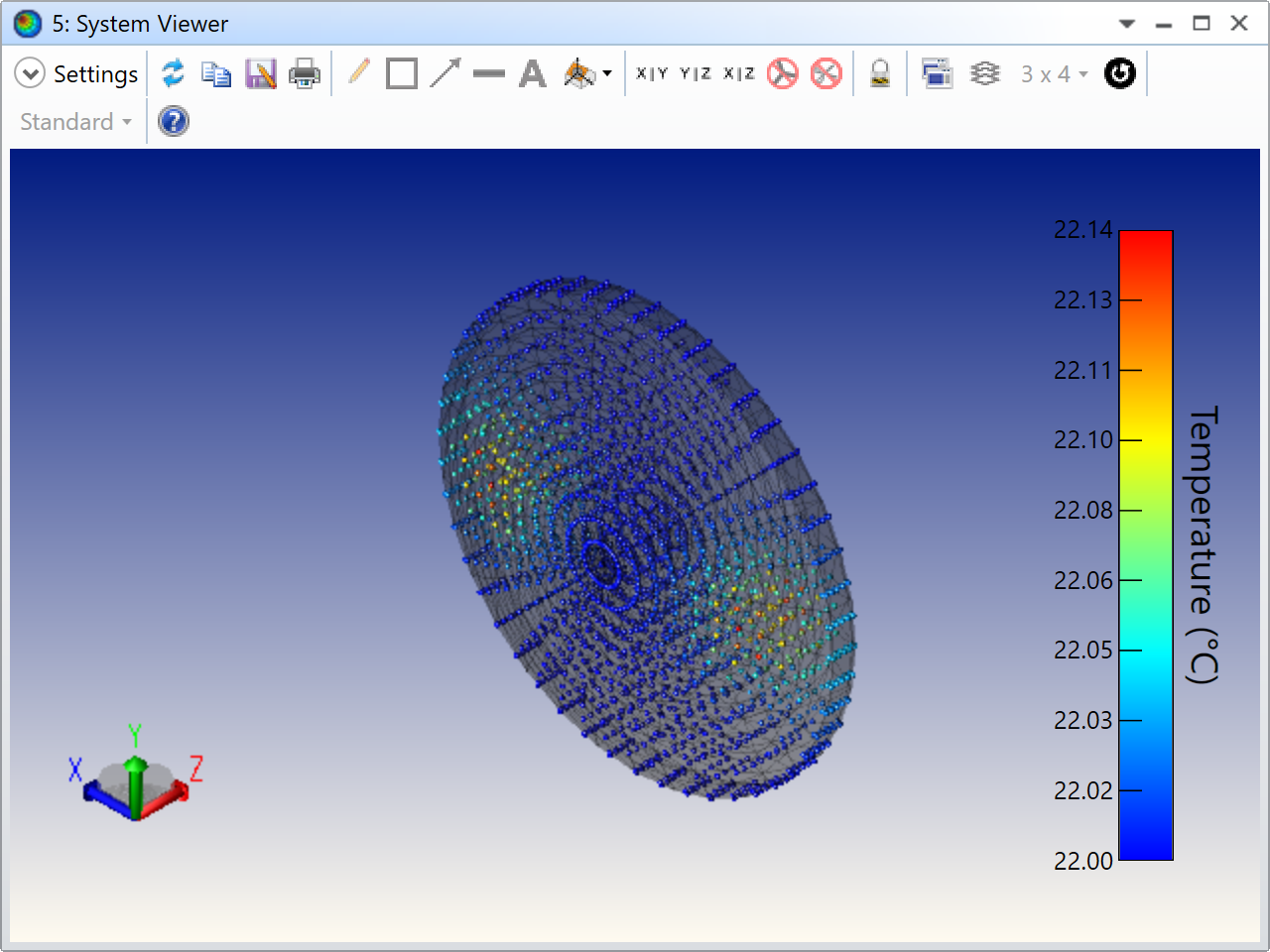Hi, I use a single lens to focus the light to a point.
Some heat sources were loaded on the single lens. I used WorkBench to simulate the heat distribution and exported the heat distribution, and then imported the finite element thermal data into Zemax STAR.
The ambient temperature is 22°C. After loading the heat source, the lowest temperature of the lens surface will not be lower than 22°C, which is normal. However, we found that by checking the gradient refractive index fitted by STAR (database - optical materials - GRIN profile), we found that the temperature corresponding to the fitted refractive index was lower than 22°C, which is obviously wrong!
Is there any way to correct this?
Attached is the test .Zar file.
Thanks!




